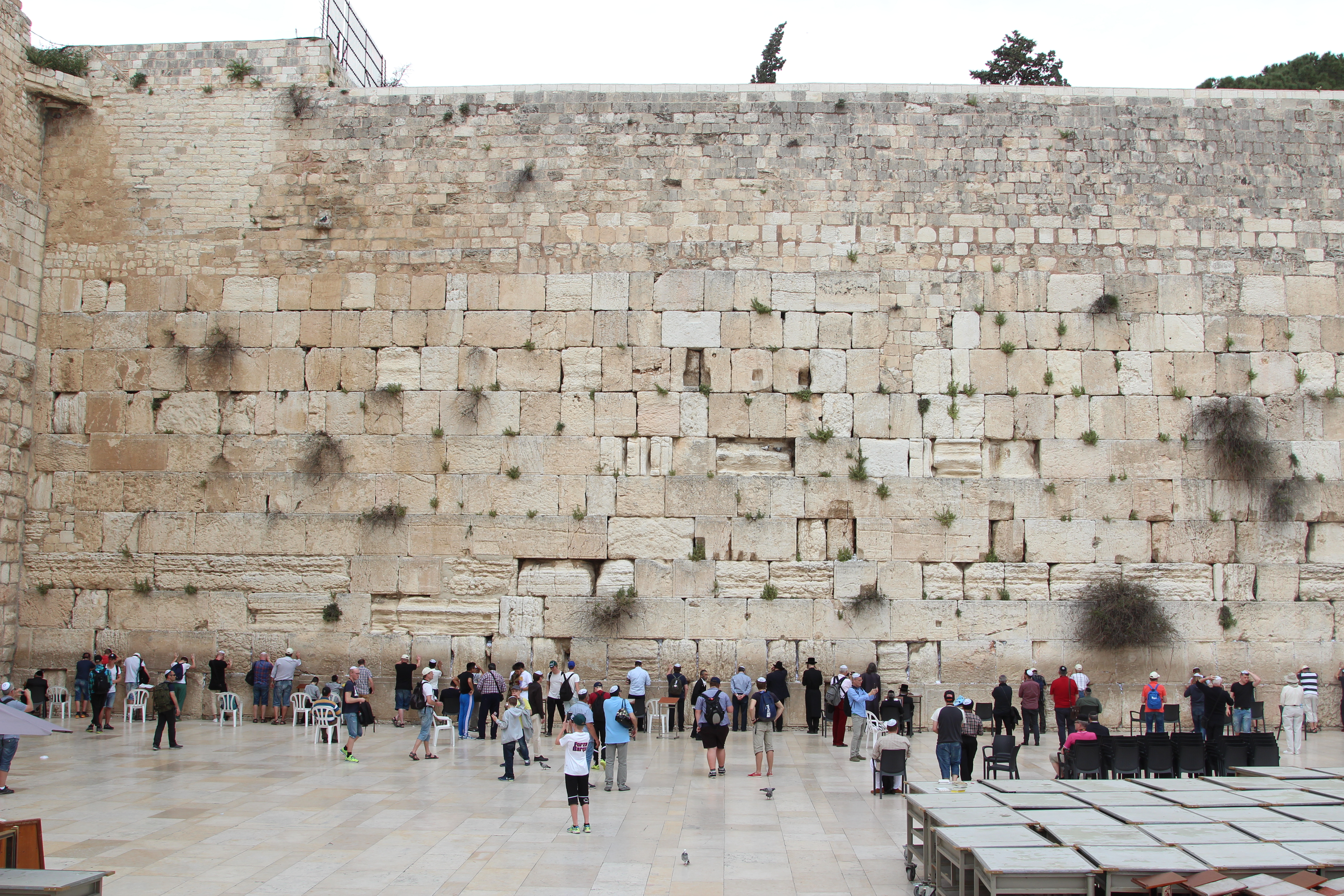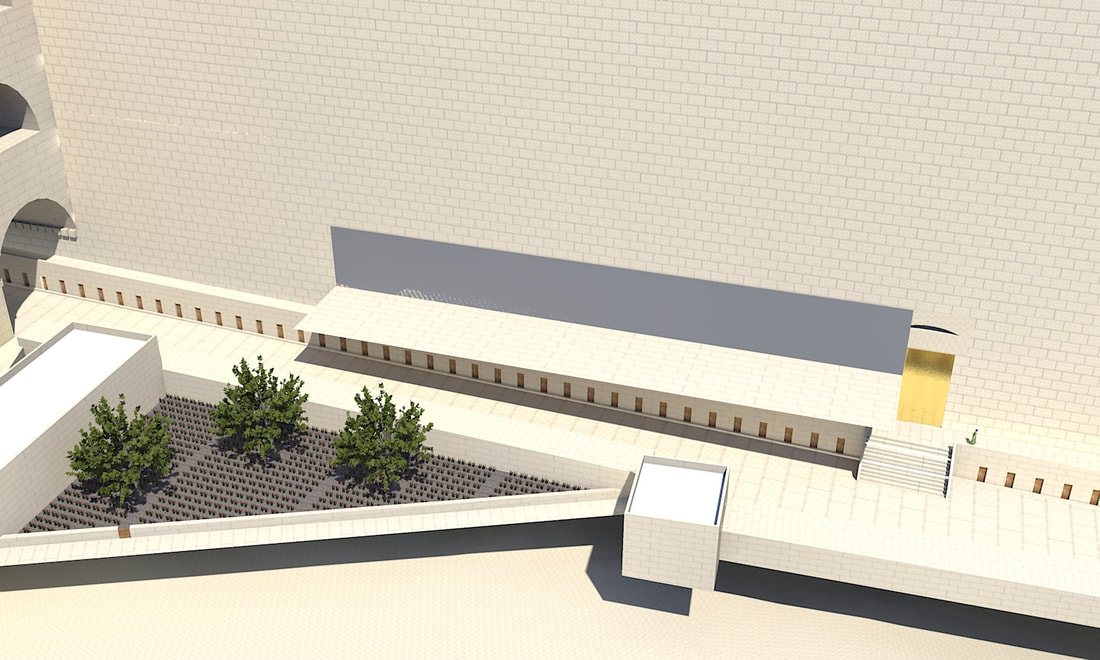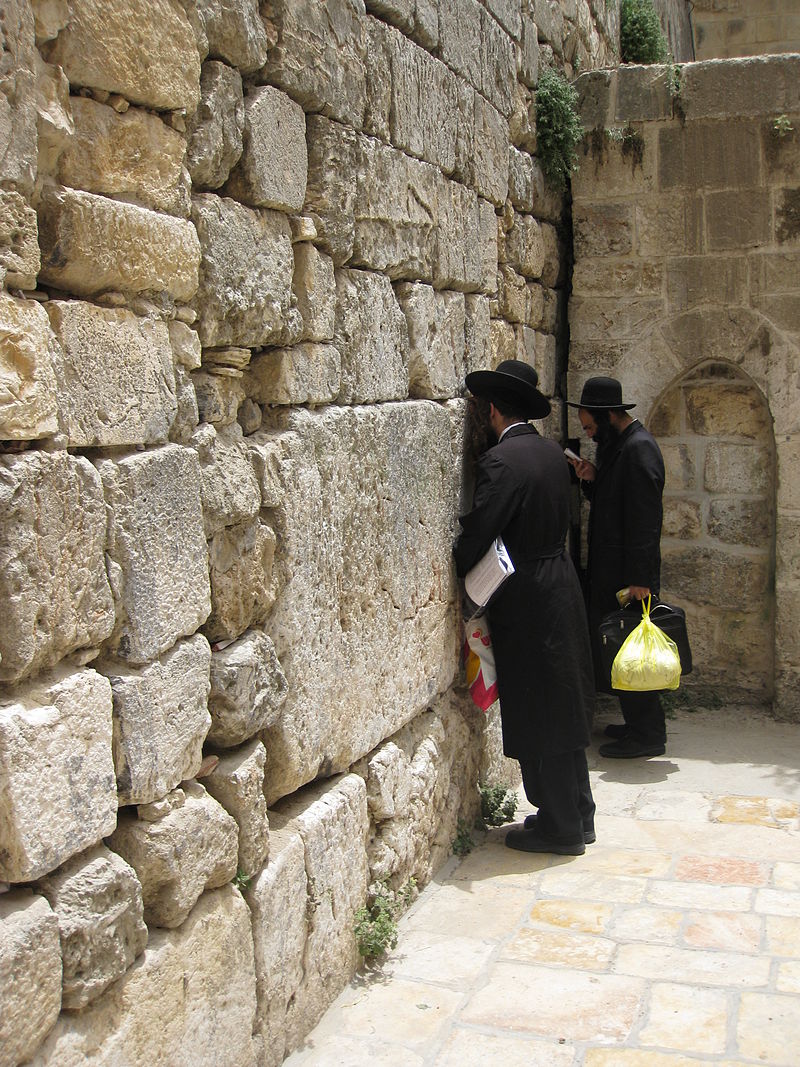|
Around thirty meters to the south of Wilson's arch is the Kosel Plaza, where we daven. This section is 58 meters long. In a previous post I have theorized that the reason we daven specifically here is because the inner part of this wall is from Shlomo Hamelech's Har Habayis. (There are various sources (אלה מסעי עמוד ה-ו, מסעות א"י ע' 147, ליקוטים הביאו הב"ח או"ח סי' תקס"א) that say that the Kosel is from Shlomo Hamelech's times, and its foundations were built by Dovid Hamelech. However, this raises a question, because in the east wall of the Har Habayis we see stones from that time, and they are a different style, they are less smooth. Also, we do not see a seam in the western wall, where the original wall and Hurdus's wall would've met, like we see in the eastern wall. However, if we say that the outer stones that we see are actually Herodian, but there are more stones behind from the time of the first Beis Hamikdash, these questions get answered. The Medrash on the Kosel The Medrash (Shir HaShirim Rabbah 2:22) says הנה זה עומד אחר כתלנו–אחר כותל מערבי של בית המקדש, למה שנשבע לו הקדוש ברוך הוא שאינו חרב לעולם. "Behold he is standing behind our walls (Shir HaShirim 2:9)"-behind the western wall of the Beis Hamikdash, why, because Hashem swore to it that it will never get destroyed. In another Medrash (Shemos Rabbah 2:2) Rav Acha says: the Shechinah never departs from the western wall, as it says, (Shir HaShirim 2:9) "Behold he is standing behind our walls" In Medrash Eichah Rabbah (1:30) it says that when the romans conquered Yerushalayim, the general divided the Har Habayis walls between four commanders, and gave each one the job of destroying one of the walls. The commander in charge of the western wall was an Arab named Pangar. The other three were able to do their task, but Pangar was not able to, since it was decreed from heaven that it shall never be destroyed, since the Shechinah is in the west. This can be seen today, because while the north wall has almost nothing left, and the south wall for around 60 meters only one stone course (the great course) of it survives, the Western Wall has the whole length of the wall standing, and to a nice height. At the Kosel Plaza, the total height of the Wall from its foundation is estimated at 105 feet (32 m), with the above-ground section standing approximately 62 feet (19 m) high. The Wall consists of 45 stone courses, 28 of them above ground and 17 underground. The first seven above-ground layers are from the Herodian period. The next four courses, consisting of smaller plainly dressed stones, are Umayyad work (8th century, Early Muslim period). Above that are 16 to 17 courses of small stones from the Mamluk period (13th–16th centuries) and later. HaKosel HaKatan There is another small part of the wall that is used for davening, (and many famous Rabbonim from previous generations davened there,) called HaKosel HaKatan, the little Kosel. It is to the north of "The Iron Gate" of the temple mount, which is located around seventy-two meters to the north of Warren's gate. Only the two lowest stone courses of the Kosel Hakatan are from the times of the Beis Hamikdash. Reference
הרב עידוא אלבה (מסורת הכותל המערבי כמקום השראת השכינה), והרב זלמן מנחם קורן, (הכותל המערבי שעליו מדובר במדרש איכה), במעלין בקודש גיליון לח - אלול התשע"ט - כולל בית הבחירה Western Wall, https://en.wikipedia.org/w/index.php?title=Western_Wall&oldid=1072426567 (last visited Apr. 4, 2022). תורמי ויקיפדיה, "הכותל הקטן," ויקיפדיה, האנציקלופדיה החופשית, https://he.wikipedia.org/w/index.php?title=%D7%94%D7%9B%D7%95%D7%AA%D7%9C_%D7%94%D7%A7%D7%98%D7%9F&oldid=29644499 (אוחזר אפריל 4, 2022).
0 Comments
Leave a Reply. |
Website updatesI have added a new lego model of the Third Beis Hamikdash, with pictures and a video in the lego gallery. Categories
All
Archives
February 2024
AuthorMy name is Mendel Lewis. Hashem said to Yechezkel, "Its reading in the Torah is as great as its building. Go and say it to them, and they will occupy themselves to read the form of it in the Torah. And in reward for its reading, that they occupy themselves to read about it, I count it for them as if they were occupied with the building of it. (Tanchuma tzav 14) |
- Beis Hamikdash posts
-
sources
- Mishnayos Middos >
- Gemarah
- Rambam >
- Rishonim
- Sha'alos Uteshuvos HaRaDVaZ
- Shiltey Hagibborim
- Ma'aseh Choshev
- Chanukas Habayis (both) and biur Maharam Kazis on middos
- diagrams >
- Tavnis Heichal
- Be'er Hagolah
- Binyan Ariel
- Shevet Yehudah
- other
- Braisa D'Meleches Hamishkan
- Third Beis Hamikdash sefarim
- from Josephus-יוסיפון >
- קובץ מעלין בקדש
- Kuntres Klei Hamikdash
- Gallery
- videos
- 1st Beis Hamikdash
- 3rd Beis Hamikdash
- virtual walkthroughs
- 3d models
- Lego Gallery
- diagram of Mizbeach
- contact
Proudly powered by Weebly




 RSS Feed
RSS Feed